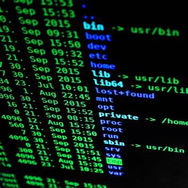- Andros Delgado

- Jan 18, 2023
- 3 min read
唯一無二のジェームズ・アール・ジョーンズの誕生日!あなたの声は象徴的であり、世界中の何百万人もの人々に喜びをもたらしてきました. "Happy birthday to the one and only James Earl Jones! Your voice is iconic and has brought so much joy to millions of people around the world. From Darth Vader to Mufasa, your performances have left a lasting impact on the entertainment industry. You are a true talent and inspiration. Wishing you all the best on your special day and many more years of success and happiness. May all your birthday wishes come true!"

Virtual assistants have become a staple in our daily lives, providing us with information and assistance at the touch of a button. However, their capabilities have been limited to a robotic and monotone voice. But with the advent of new technology, customizable AI voices are now possible. This technology, known as voice cloning, allows users to generate speech in the same voice as a famous person, such as James Earl Jones. The possibilities are endless, from having a virtual assistant that sounds like Darth Vader, to creating virtual characters with famous voices for video games and movies. In this blog post, we will delve into the technology behind customizable AI voices, the benefits they offer, and the potential impact they could have on the industry.

Creating AI voices that can mimic famous voices is a complex process that involves deep learning and voice cloning software. One example of this software is Respeecher, which uses neural network algorithms to analyze a recording of a person's voice and replicate it. The software is able to mimic the unique characteristics of a person's voice, such as pitch, rhythm, and accent.
Advances in technology have made it possible to create more accurate and realistic AI voices, making it possible to create virtual assistants that sound like a specific person.
Benefits of Customizable AI Voices
Customizable AI voices offer a unique personalization experience for users. With this technology, users can now personalize their virtual assistants to mimic the voice of any famous person they choose. This can enhance the user experience by making virtual assistants feel more like a personal assistant. Additionally, this technology can be used in various industries such as entertainment, customer service, and personal assistant applications. It also has the potential to increase accessibility for individuals with hearing or speech impairments.
Potential Impact on the Industry
Customizable AI voices have the potential to change the way we interact with and perceive virtual assistants. This technology could lead to increased competition in the virtual assistant market, as more companies adopt this technology to provide a more personalized experience for users. Additionally, it could create new opportunities and industries such as virtual character creation for video games and movies.

Conclusion
In conclusion, customizable AI voices are the next step in the evolution of virtual assistants. The technology behind them is constantly evolving, and its potential impact on the industry is huge. It can enhance the user experience, provide new opportunities for various industries and increase accessibility. As we celebrate the birthday of James Earl Jones, let's remember his iconic voice and the potential of new technology to replicate it and many other famous voices. The possibilities are endless, and it's definitely worth keeping an eye on the future developments of this technology.


![A1 LONG [2022].png](https://static.wixstatic.com/media/0eb7b7_e66c4d0f70d6412ab2c091e6e85eccdc~mv2.png/v1/fill/w_980,h_95,al_c,q_85,usm_0.66_1.00_0.01,enc_avif,quality_auto/A1%20LONG%20%5B2022%5D.png)

















